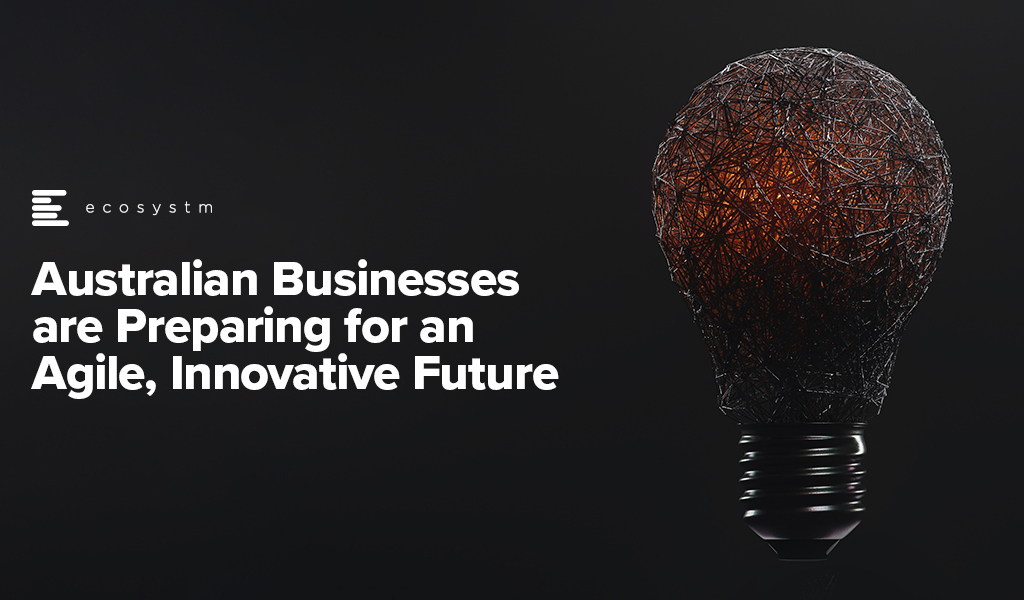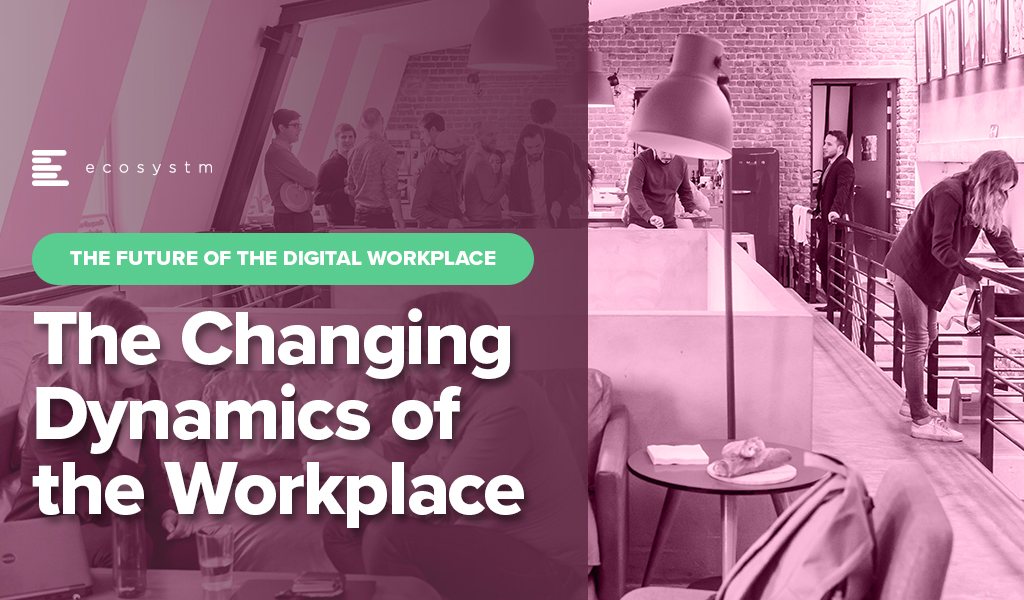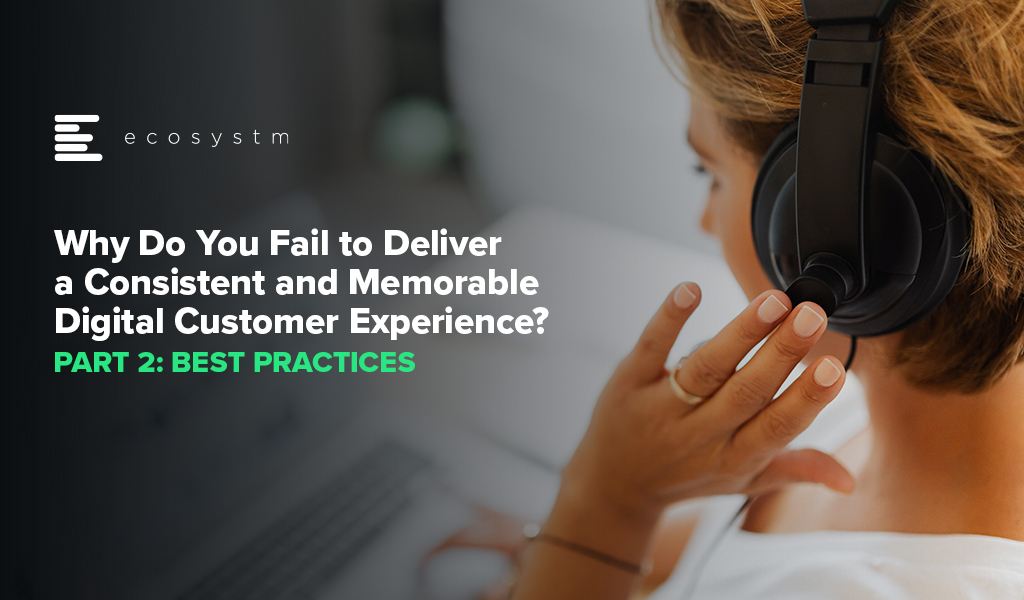If you have been following my insights and blogs at Ecosystm, it won’t come as a surprise that I am a fan of foldable devices. I have owned the Z Fold3 for over a year now. In that year, I found myself reaching for my tablet less often as the larger screen on the Z Fold3 was enough for most of my needs. Most apps were resized appropriately and provided an improved user experience, and the upgraded OS with a MacOS style application bar made it even easier to switch between applications.
The larger screen of the foldable form factor boosted my productivity too – I could use multiple applications and respond to an email with the content’s source (PDF, Excel file, website, etc.) also open – meaning far less flicking between apps, which isn’t as easy on a smartphone compared to a laptop or a desktop computer. The computer style view for messages and emails (with the email list on the left and the actual email on the right) was brilliant. And I enjoyed using the external screen as a preview screen for taking selfies (I already have my work cut out in making selfies look good! So, being able to see the picture in advance helps a lot).
However, Fold3 had its imperfections. The slightly narrow front screen made typing difficult when the device was folded – I primarily used it to check the status of things (such as turning my coffee machine on/off, checking my solar production, etc.). The inside screen also had durability issues. After a year, Samsung installed screen protector was coming off, and then, the right inner screen gave up completely on me. That said, Samsung has been excellent at fixing these issues under warranty.
Samsung Galaxy Z Fold4 – Enhanced Features
With the launch of the new Z Fold4, I was keen to get my hands on a trial device, and the good people at Samsung and their PR agency arranged that for me. I have now spent two weeks with this device. Despite it being similar in size to the Z Fold3, the upgrades do make a real difference:
- The few extra mm of width on the front screen makes it much more usable – I can now use this screen for typing messages and entering data. I still prefer the larger screen for things such as consuming content and typing longer emails. But the outside screen is usable for more than just checking the status of systems or apps.
- The shorter height and the wider screen mean that the inside screen now feels more “expansive” – more of a tablet experience – and is getting closer to an iPad mini. This makes consuming and creating content easier and more enjoyable. As an avid tablet user, even with the Z Fold3, I would hesitate when going out, wondering if I needed to take my iPad with me. I noticed that I did not hesitate with the Z Fold4 – I was fine without my tablet.
- Typically, newer phones feature improved cameras. This is certainly the case with the Z Fold4 – the camera feels faster than the Fold3, taking lesser time to focus and take pictures. And the images too are sharper and richer.
- The screen warranty has also improved – perhaps in acknowledgement of the issues with the Z Fold3 screen. There are specials offering screen replacements for a low cost, even if you damage the screen, as well as discounts on Samsung Care+, which offers two replacement devices in 24 months.
The only comment I have is that it is the most slippery phone I have used so far! It didn’t come with a protective case and in two weeks, I have dropped this phone more times than I have dropped any other phone in the past few years! It has slipped off seats and desks as well as out of my pocket and hands. Although, it does claim to “stand up to life’s bumps and fumbles” and this has been accurate so far (as it does not even have a scratch on it yet – which is a surprise as it has hit wood, tiles, and concrete pretty hard!). But if I were keeping the device for any longer, I would immediately purchase a case!
Who Will Use It Most?
Whether this device is right for you depends on your device use patterns. I do believe there is a case for businesses to invest in foldables – particularly for employees who share content one on one with clients or prospects, or those who want to be more productive and be away from their desks without lugging a laptop. Anyone who is considering a flagship phone with a larger screen (iPhone Pro Max or Pixel 7 Pro) should take a look at the Samsung Galaxy Z Fold4. You will be pleasantly surprised with the quality and capability of this device. I know I will be sad to see it go when I hand it back to Samsung!

Businesses in Australia have come a long way over the past few years in digitising their processes and capabilities. In early 2020 – as the pandemic swept across the globe – nearly every business began to understand the challenges that lay ahead in digitising their organisation to meet the needs of fully remote employees and customers. Teams all across the business started to plug holes, reshape processes and deploy new technology capabilities to quickly meet these changing needs. This work continued over the next few years to the point now that most businesses in Australia have fully digital front-ends.
But as businesses move to “COVID normal” they are looking to the next opportunity. Digitising existing processes isn’t enough – they are starting to accelerate their innovation to create entirely new digitally native products and services. Growth by selling more of what they make is being replaced by a desire to grow into new markets, new products and new services. Business innovation has leapt back onto the agenda – and the ability to innovate at pace will define success in this new era.
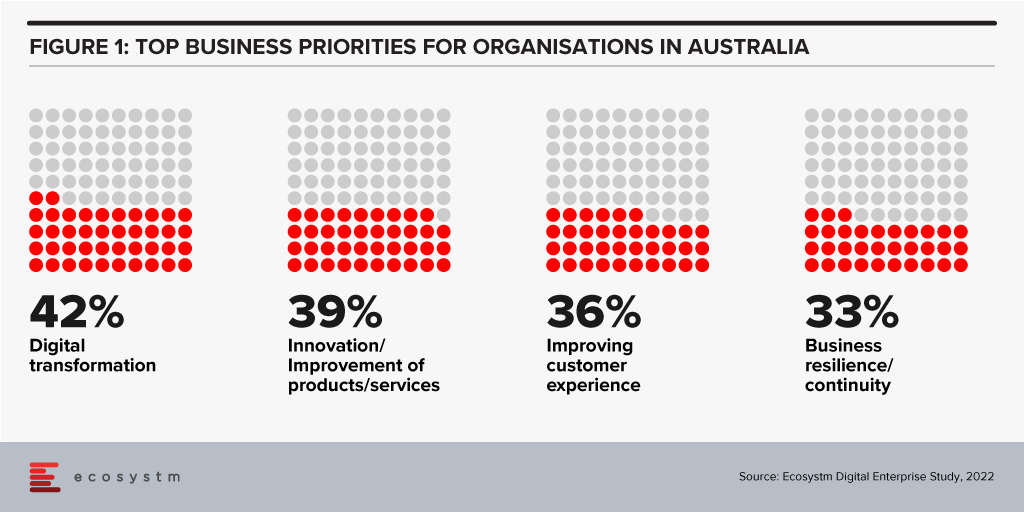
Improving IT Operations is a Major Priority for Tech Leaders in Australia
At the same time, technology leaders and their teams are dealing with technical debt and process complexity brought on by two years of accelerated and unplanned technology implementations. There is an urgent need to modernise IT Operations to better manage the growing number and complexity of digital systems. With the increasing importance of digital services to business, the Service Management and Tech Operations functions need increased investment, better processes, and greater automation to find and fix technology issues to minimise the impact of these issues on customer and employee outages.
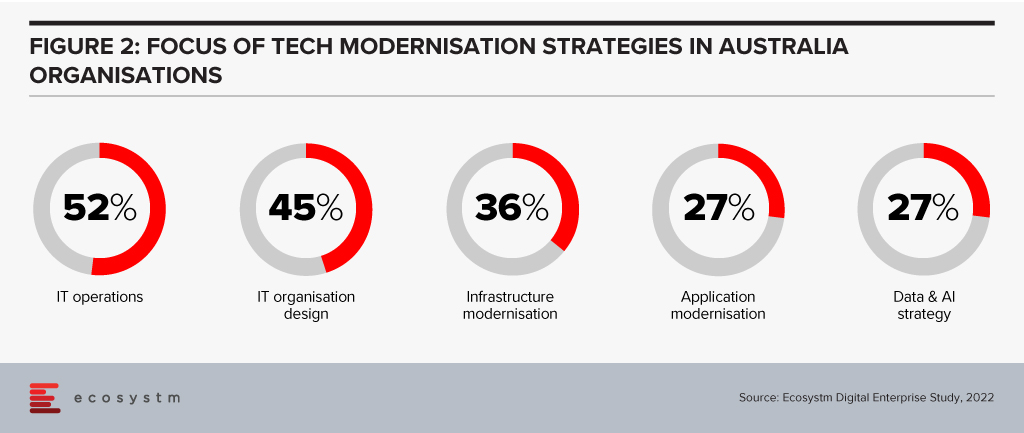
The Skills Crisis is Real – and Not Going Away Soon
The challenge today is to drive this important change while faced with the tech skills shortage. IT has not been spared the struggles that come with a low unemployment market – but often many of the Employee Experience initiatives designed to improve employee retention and loyalty are not designed with the tech team in mind. The demand for tech skills is from the lowest to the highest levels – from level 1 helpdesk operators to security, coding, cloud, and system management professionals – tech leaders are finding it very difficult to find and keep good staff.
Hybrid Cloud is Gaining Traction in Australia
As tech leaders design the technology team and architecture that will help to drive their business forward and enable the agile, innovative future that the business leaders imagine, it is becoming clear that the hybrid cloud will play an increasingly important role in this future. While the drive to public cloud is real – there is an increasing recognition that some applications will remain in private cloud environments and therefore they need to manage a multi-cloud world. Australian businesses have embraced hybrid cloud management platforms to manage their many cloud investments – both public and private – and help the business deliver new digital services at pace.
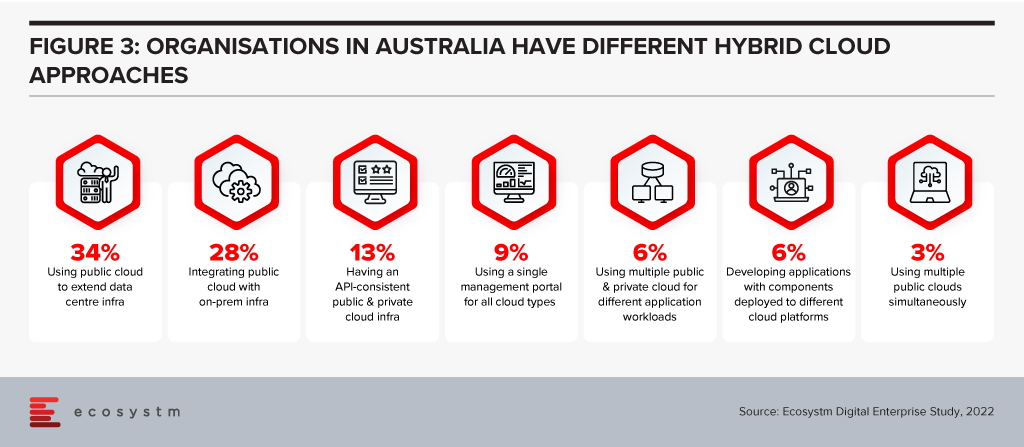
Tech Leaders Need to Perform a Balancing Act
The need to deploy new digital services, continuously improve them, make them always available, ensure they are running in the best environment, deliver automation and AI initiatives using great data – while finding and keeping the skills the tech team needs – are the real challenges that IT leaders face today. Finding the right balance between investment, automation, skills, governance, security, speed and agility (amongst many other factors) is the never-ending job of the CIO – it is just more crucial than ever that they get this right, as the ability of the business to survive and thrive in this new era of innovation and agility is at stake.

The last few months have been full of bad news for some of the organisations currently recognised as the most innovative firms on the planet. Netflix has been losing subscribers, Amazon’s revenue growth is slowing dramatically, and Tesla now has serious competition in the EV market, with its dominance beginning to wane. In Australia – my home country – some of the “fintech” banks have closed their virtual doors over the past six months, leaving the market to the traditional players.
And many of the traditional businesses are turning themselves around. Foxtel, the “legacy” cable TV provider in Australia, has grown its subscriber base by 19% off the back of its streaming services – where subscriber numbers are growing at over 60% YoY. ComfortDelgro – a transport provider based out of Singapore – is seeing its revenue start to increase again after being hit hard by digital competitors and the pandemic. CBA’s “Ceba” virtual assistant is winning plaudits in Australia and globally.
It’s Not Too Late to Catch-up!
In many respects, the fact that the digital disruptors got SO far ahead is an indication of just how slow the rest of the market was to respond, and a credit to the significant investments these innovators made to get ahead. But now that the rest of the market is catching up shows that there is no secret sauce when it comes to innovation. What Uber, Tesla, Amazon and every other digital innovator has done is replicable. Your business just needs to make the necessary changes to give you the ability to catch up to the digital innovators in your industry – do it well and you will even keep up with them or get ahead. And innovation is the leading business priority for most organisations today!

What all of the digital disruptors did fifteen years ago, and many other businesses have done since then, is develop the ability to create and improve digital customer experiences at pace. Nearly every customer experience is digital – at least in part. So creating great digital experiences will go a long way to creating great customer experiences. Sounds easy right?
However, what this actually means is they changed their culture, structure, KPIs, technology, skills and the nature of their business. Many organisations have beaten the path to becoming digital businesses – in fact, it is a well-worn path. When you set off on the journey you are no longer taking risks or heading out alone. There is a very clear playbook as to how to become a digital business today.
What Does a Digital Business Look Like?
If you are part of your organisation’s tech team and wondering how digital your business is, ask these questions:
- Do you mainly deploy new technology services with the Waterfall project methodology?
- Do all of the development work with the IT team (and not in business or customer teams)?
- Does it take months or years to deploy new services?
- Are your KPIs the same as they were 5-10 years ago?
If the answer to some or all of these questions is YES, then it is likely that you are working for a business that will not catch up with or get ahead of your competitors. You might have a few initiatives that see you make some ground on them – but innovation today is not about leaps and bounds – it is about continual improvement. If you catch up today but don’t have the ability to continually improve, you will have fallen behind again tomorrow…
The good news is it is never too late to start this journey. It typically starts from the top of your business – the CIO cannot make the entire business agile. The head of the digital cannot change the culture of the entire organisation. But the IT and digital teams can get the ball rolling by changing their structure and work processes. Start by moving some developers into the Customer Experience team (if you have one!). Stop funding projects and start funding squads, tribes and teams. Structure the team around the customer journey – or at least make it easier for customers to get value from the digital assets and services you offer. Hopefully, someone will notice the fact that the tech team is helping a business unit or team to operate with agility and they’ll start asking why they cannot have that same ability?
And by then the ball is rolling down the hill and you are on your way to being a digital business – and on your way to giving customers the products, services and experiences they demand today and tomorrow.

The way we work in Australia and New Zealand (ANZ) is changing. In 2020 “work” went from a place you go to something you do.
Through the many restrictions in 2020 and 2021, knowledge workers in ANZ changed their work behaviours and employers changed their expectations of their employees. Tighter border controls and fast economic recoveries have swung the pendulum in the favour of employees, and “The Great Resignation” has started to play out across the region.
The Ecosystm Voice of the Employee Study aims to explore the emerging global Future of Work trends from an employee’s point-of-view. In an environment of uncertainty, this study is designed to be an ongoing, dynamic study that will be able to track the major shifts in preferences, perceptions, and practices through 2022.
Here are some insights from the study that can help businesses in ANZ develop strategies and capabilities to better serve their remote and office-based employees.
- The Great Resignation has begun in ANZ
- Women are more likely to work entirely from home
- Those working entirely from home are more likely to change jobs/careers in 2022
- Knowledge workers in ANZ are enjoying the Work from Home model
- Employees are looking for more flexibility and choice
Read on to find out more.

Last week, Kyndryl became a Premier Global Alliance Partner for AWS. This follows other recent similar partnerships for Kyndryl with Google and Microsoft. This now gives Kyndryl premier or similar partner status at the big three hyperscalers.
The Partnership
This new partnership was essential for Kyndryl to provide legitimacy to their independent reputation and their global presence. And in many respects, it is a partnership that AWS needs as much as Kyndryl does. As one of the largest global managed services providers, Kyndryl manages a huge amount of infrastructure and thousands of applications. Today, most of these applications sit outside public cloud environments, but at some stage in the future, many of these applications will move to the public cloud. AWS has positioned itself to benefit from this transition – as Kyndryl will be advising clients on which cloud environment best suits their needs, and in many cases Kyndryl will also be running the application migration and managing the application when it resides in the cloud. To that end, the further investment in developing an accelerator for VMware Cloud on AWS will also help to differentiate Kyndryl on AWS. With a high proportion of Kyndryl customers running VMware, this capability will help VMware users to migrate these workloads to the cloud and run core businesses services on AWS.
The Future
Beyond the typical partnership activities, Kyndryl will build out its own internal infrastructure in the cloud, leveraging AWS as its preferred cloud provider. This experience will mean that Kyndryl “drinks its own champagne” – many other managed services providers have not yet taken the majority of their infrastructure to the cloud, so this experience will help to set Kyndryl apart from their competitors, along with providing deep learning and best practices.
By the end of 2022, Kyndryl expects to have trained more than 10,000 professionals on AWS. Assuming the company hits these targets, they will be one of AWS’s largest partners. However, experience trumps training, and their relatively recent entry into the broader cloud ecosystem space (after coming out from under IBM’s wing at the end of 2021) means they have some way to go to have the depth and breadth of experience that other Premier Alliance Partners have today.
Ecosystm Opinion
In my recent interactions with Kyndryl, what sets them apart is the fact that they are completely customer-focused. They start with a client problem and find the best solution for that problem. Yes – some of the “best solutions” will be partner specific (such as SAP on Azure, VMware on AWS), but they aren’t pushing every customer down a specific path. They are not just an AWS partner – where every solution to every problem starts and ends with AWS. The importance of this new partnership is it expands the capabilities of Kyndryl and hence expands the possibilities and opportunities for Kyndryl clients to benefit from the best solutions in the market – regardless of whether they are on-premises or in one of the big three hyperscalers.

As the leader of the tech team, CIOs are working through many different strategies and initiatives to drive new digital initiatives and improve existing ones. They are often pulled into new initiatives by business leaders and have to make hard decisions on how to support a business that is increasingly digitalised.
But there are five initiatives that all CIOs should have on their list for 2022 as they will deliver impactful results quickly and will make future investments more manageable and reliable.
In 2022, these 3 technology investments will give you a fast start:
- AIOps. This will be an easy business case to build if you evaluate the benefits
- Hybrid Cloud Management. Even if your business is racing towards the public cloud, you will have some hybrid cloud services.
- Federated Data Management. Because your infrastructure and applications will be hybrid, your data needs to be too.
These strategic initiatives will also be crucial this year:
- Resolve technical debt. Improve architectures and increase agility.
- Improve Talent Recruitment and Employee Retention. Be aware that the “great resignation” is a reality
Click here to download 5 IT Initiatives to Jumpstart Your Digital Business in 2022 as a PDF.

Consistent customer and brand experiences should be at the heart of every digital strategy. In the first part of this feature, we explored the barriers to creating memorable customer experience (CX). Here we look at what organisations who have mastered the art of great CX have in common.
Best Practices
Through Ecosystm research and interviews with organisations we have found that businesses that are already creating a consistent, effective, and memorable digital customer experience have these traits in common:
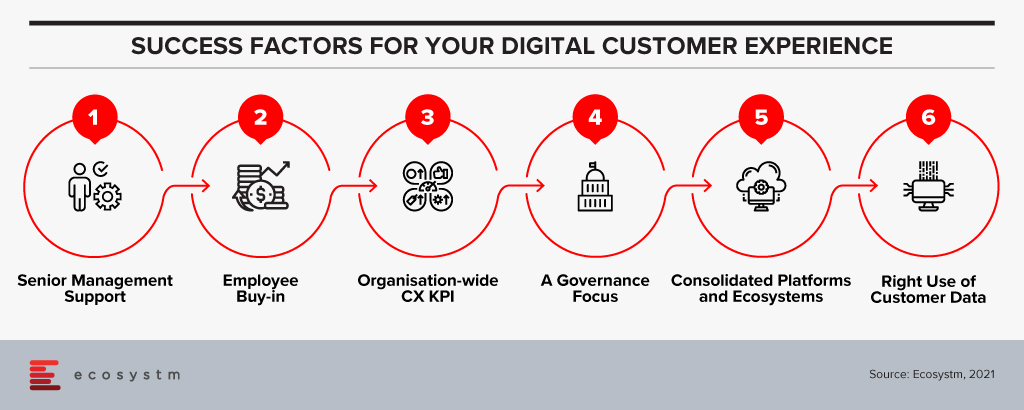
Had CEO and Board-level support for their strategy. Your ability to create a memorable and consistent digital experience lives and dies by the support of your senior management team. Without the CEO telling the rest of the business that this is a priority, the employees simply won’t come along for the ride.
Gained Employee support for the strategy. There is no point in creating a digital customer strategy at the Board and senior management level if it is not consistent with the lived experience of employees. An Australian bank made the mistake of making all their digital experience decisions at the most senior levels without taking the employees on the journey too. Change needs buy-in from all levels of the business – so make sure all levels are heard and that they understand why and how you will change the way they work and deliver customer value.
Made the delivery of a brand-consistent experience into a key KPI. In these businesses, a consistent CX is a given. That doesn’t mean they are not personalising their customer experiences or optimising them for specific touchpoints – it means that collaboration with other teams and channels is a base expectation. Changes are not made without the knowledge of other teams.
Prioritised governance over management. The risk of collaboration and including many people in decisions is that it slows decisions down and impacts business agility. To enable their collaborative approach to digital experience delivery, these businesses have set rules and guardrails into their decision-making processes to ensure they continue to deliver on-brand and consistent experiences. Many also have created cross-channel teams or sewn their digital skills across the different channel teams to ensure consistency of customer experience.
Consolidated on fewer platforms and CX ecosystems. Five years ago, businesses needed to source smaller, more innovative CX software and cloud components just to keep up with customer expectations. The trendsetters had built their own CX capabilities and weren’t relying on the traditional ISVs for their CX innovation. Smaller providers were emerging to fill these gaps for businesses who were not digitally native. Sourcing best-practice solutions is much easier today. Some of those smaller vendors have emerged to create their own platforms and CX ecosystems, and other suppliers have acquired and innovated their own software to meet and exceed customer requirements. For example, you no longer need multiple content management systems or platforms – a single content source can now meet the different needs of your different channel teams and feed consistent content to all customers tailored to their journey stage or chosen touchpoint.
Used data for their customers – not against them. Many personalisation or automation attempts have failed. Not because they used the wrong data, but because they were driving the wrong outcome. They were designed to corner a customer into a decision, versus helping them make the best decision for their circumstance. We all know what that looks like – if an interaction feels “creepy” like they are following you around the web and across touchpoints, or they seem to know too much about you. This is when a business is using data against you to try to force an action. Smart businesses use data to help customers achieve their goals – in the knowledge that happy customers will not only return to the business or brand, but also tell their friends and family about the experience.
Creating a consistent and on-brand digital experience will drive many positive outcomes for your customers and your business. Your customers will know what to expect and be comfortable in their interactions with your brand in whatever channel or touchpoint they desire – with the knowledge that the experience will be consistent and integrated and their time will not be wasted. They’ll return to your business over and over again. The consistent experience will also drive down your costs – with less rework, fewer platforms to support, more automation and hopefully a simpler technology architecture. Done right, it will also create a single unifying digital initiative across the business that will help to break down barriers, improve collaboration, and unlock innovation in and between your business teams.

More than ever before you are having to cater to digital-savvy customers and create a competitive edge through the customer experience (CX) that you provide. In this two-part feature, I explore the barriers organisations face in their goal to create a memorable CX; and what the organisations that are getting it right have in common.
Spend on digital services, technologies, platforms, and solutions is skyrocketing. As businesses adapt to a new normal, they are increasing their spend on digital strategies and initiatives well beyond the increase they witnessed in 2020 when all customer and employee experiences went digital-only. But many digital and technology professionals I meet or interview maintain that their digital experiences are poor – offering inconsistent and fragmented experiences.
The Barriers
Digital, CX and tech leaders highlight their laundry list of challenges in getting their digital experiences to deliver a desired and on-brand customer experience:
A poorly informed view of the customer and their journey. Sometimes the customer personas and journey maps are simply wrong – they were developed by people with an agenda or a fixed idea of what problems need solving.
Inconsistent data. Too much, too little, or plain incorrect data means that automation or personalisation initiatives will fail. Poor access to data or lack of data sharing between teams, applications and processes means that businesses cannot even begin to build a consistent CX.
Too many applications and platforms. As digital initiatives took hold, technology teams witnessed an explosion of applications and platforms all conquering small elements of the digital journey. While they might be great at what they do, they sometimes make it impossible to create a simple and consistent customer journey. Some are beyond the control of the technology team – some are even introduced by partners and agencies.
Inconsistent content. For many businesses, content is at the heart of their digital experience and commerce strategy. But too often, that content is poorly planned, managed, and coordinated. Different teams and individuals create content; this content is then inconsistently delivered across customer touchpoints; the content is created for a single channel or touchpoint; and delivers to customers at the wrong stage of the journey.
Little co-ordination across channels. Contact centres, retail or other physical locations and digital teams often don’t sing from the same songbook. Not only is the customer experience inconsistent across different physical and digital touchpoints, but it may even be inconsistent across digital touchpoints – chat, web and mobile offer different experiences – even different parts of the web experience can be inconsistent!

Knowledge is not shared between channels. Smart customers will “game” a company – finding the best offer across different customer touchpoints. But more often than not, inconsistent knowledge leads to very poor customer experiences. For example, a telecom provider might give different or conflicting information about their plans across web, mobile, contact centre and retail outlets; and with the increasing popularity of marketplaces, customers receive inconsistent product information when they deal with the brand directly than through the marketplace. Knowledge systems are often created to serve individual channels and are not trusted by customer service or retail representatives. We see this in Ecosystm data – when customer service agents are asked a question, they don’t know the answer to, the first place they look is NOT their Knowledge Management tool.
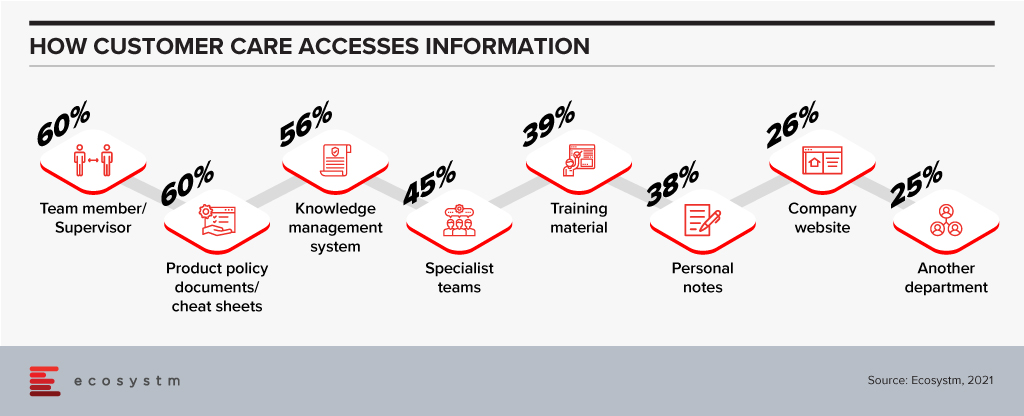
Poor prioritisation of customer pain points. Customer teams may find that it is easier to tackle the small customer challenges and score easy points – and just deprioritise the bigger ones that will take significant effort and require considerable change. Unifying the customer journey between the contact centre and digital is one big challenge that many businesses continue to delay.
And it gets worse… According to Ecosystm data, 55% of organisations consider getting board and management buy-in as their biggest CX challenge. This means that Chief Digital Officers, CX professionals and digital teams are still spending a disproportionate amount of time selling their vision and strategy to the senior management teams!
But some organisations are getting it right – creating a memorable digital experience that retains their customers and attracts more. I will talk about what is working for them in the next feature.

The term “intranet” won’t die. It should. I don’t think I have ever seen a good intranet in 24 years since I first started writing about business intranets in 1997 (yes – by writing about this market I was a part of the problem!). I’d even argue that there is no such concept as a “good intranet” – as it is an inherently flawed idea. An intranet effectively tries to bring together all the stuff that employees don’t access or don’t want to access and puts it somewhere that employees might actually use.
Intranets don’t help employees do their jobs
Why don’t we access these systems? Because they are generally not “core” to our jobs. Employees will find and access the systems and applications that are core to getting their jobs done – even if they are terrible to use (even in this “designed for humans, SaaS-world” there are still plenty of core systems that are terrible to use). Some companies try to integrate their intranet and core applications; making employees access the intranet to login to their essential apps. This might make life easier for IT responsible for deploying, managing and securing the applications. It also excites HR as they hope that along the way to accessing these systems, a “schmear” of company culture or information might rub off on them. But many employees quickly work out ways around these systems by bookmarking sites or using dedicated applications.
One of the reasons that company intranets are generally so poor is because they don’t actually help people do their job. There are often no guided processes or checklists to ensure follow through on tasks. Remember how many salespeople didn’t (or still don’t) use the CRM system because it didn’t help them actually sell? Well, intranets suffer from the same problem.
Some software providers looked to solve this problem by bringing the company intranet and core application together into a single interface. Salesforce has limited success with Chatter – but many users of Chatter spent much of their energy telling employees they “weren’t using Chatter the right way” – which sounds awfully like a design problem, not a user one.
Now is a good time to review your company intranet
Why now? Because the big collaboration players (Microsoft in particular) are improving their offerings in this space, creating partnerships, and painting a vision of a world where employees might actually WANT to access company intranets.
Which brings me to Microsoft Viva. We wrote about Viva when it was initially launched as a concept and businesses (and more importantly, their employees) can now experience the capabilities. Viva helps resolve some of the challenges with business intranets:
- It makes some of the collaboration systems more usable and insightful
- It actually provides outcomes for employees (through the learning module in particular)
- It integrates with existing processes and exposes these application-centric processes through Teams
At the same time, it is trying to be a “cultural change agent” by having a single place to go to view company news and announcements. This is similar to many company intranets, and like many of them, is likely to be an abandoned sideshow – the only time many employees visit it will be when they are forced to – like when the CEO sends an all-company email saying that there is an announcement on the company intranet that everyone needs to see. Which is the digital equivalent of posting you a letter to inform you that you have an email!
The challenge for Viva is that employees need to be using Teams to get the most out of it – and I don’t just mean “using Teams for chat and calling” but using the collaboration elements effectively – ALL the time. And the challenge with this is that (a) many employees don’t EVER use these features of Teams (or use them sporadically), and (b) some companies (and teams within companies) have multiple platforms for collaboration and sharing (Slack, Trello, Basecamp, Jira etc).
But either way, Viva looks like a positive step forward for collaboration – and more importantly, it gives businesses some guidelines on how to improve their existing intranet.

How to Make your Intranet work?
Integrate the work that people have KPIs on, with collaboration and intranet systems
Design processes so the intranet makes it EASIER for people to do their jobs – by removing unnecessary handing of information, copying and pasting, multiple levels of authentication and moving between many applications or screens. Leave requests or approving invoices have already been integrated into email – so managers can click a button in the email to send the approval. But what if there were a page on the intranet where all the leave requests or approvals for funding or payment were in a single spot? What if the system provided insight around these requests (such as Mary Singh only has 1 day leave left, or Company ABC takes 90 days to pay on average)? And if all leave requests could be approved with a single click, it actually makes the employees life easier.
Build processes into the systems to solve employee pain points
Many intranets are ostensibly used for helping employees find each other or find experts on specific topics. But they don’t guide this process – they just say “there’s lots of information here – use the search tool and good luck!”. Design guided processes for outcomes people actually want to achieve. Survey your employees to find out what they’d like the intranet to help them achieve – and build some employee journey maps across various roles to understand the challenges and pain points. If it makes sense, use the intranet to help resolve those pain points.
Make your existing tools more powerful and easier to use
Your employees generally want to collaborate. Don’t get me wrong – many don’t wake up each morning thinking that they’d love to share some documents with unknown team members today – but they do want to work together more easily than they do today. So take a look at what stops them from achieving this and look to solve those problems by making existing tools more powerful and easier to use. Adding analytics helps employees and their managers better manage their time and their interactions. Automating file sharing and discovery will help employees find the information they need without adding additional work for the content creator.
Businesses need to think of their intranets as “places to get things done”
Too many intranets seem to be designed for 4pm on Friday afternoon versus 9am Monday morning. And if this is yours, then don’t be surprised that employees don’t use it that often or give it little time. The more you can use an intranet to make employees lives easier, the more likely that you will be creating a resource which improves the productivity and happiness of the employees you serve.




